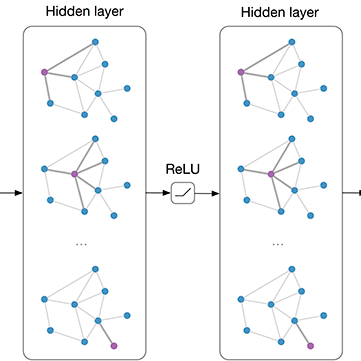Short-term traffic flow prediction is a vital branch of the Intelligent Traffic System (ITS) and plays an important role in traffic management. Graph convolution network (GCN) is widely used in traffic prediction models to better deal with the graphical structure data of road networks. However, the influence weights among different road sections are usually distinct in real life, and hard to be manually analyzed. Traditional GCN mechanism, relying on manually-set adjacency matrix, is unable to dynamically learn such spatial pattern during the training. To deal with this drawback, this paper proposes a novel location graph convolutional network (Location-GCN). Location-GCN solves this problem by adding a new learnable matrix into the GCN mechanism, using the absolute value of this matrix to represent the distinct influence levels among different nodes. Then, long short-term memory (LSTM) is employed in the proposed traffic prediction model. Moreover, Trigonometric function encoding is used in this study to enable the short-term input sequence to convey the long-term periodical information. Ultimately, the proposed model is compared with the baseline models and evaluated on two real word traffic flow datasets. The results show our model is more accurate and robust on both datasets than other representative traffic prediction models.
翻译:短期交通流量预测是智能交通系统(ITS)的一个重要分支,在交通管理中起着重要作用。图变网络(GCN)被广泛用于交通预测模型,以更好地处理公路网络的图形结构数据。然而,不同路段的影响权重通常在现实生活中不同,难以人工分析。传统的GCN机制依靠人工设置的对称矩阵,无法在培训期间动态地学习这种空间模式。为了处理这一缺陷,本文件提议建立一个新的位置图图变迁网络(Location-GCN)。位置-GCN通过在GCN机制中增加一个新的可学习的矩阵来解决这个问题,利用这一矩阵的绝对值来代表不同节点之间的不同影响水平。然后,拟议的交通预测模型使用长期短期内存(LSTM) 。此外,在本研究中使用了三角测量函数编码,使短期输入序列能够传递长期定期信息。最终,将拟议的模型与基线模型进行比较,并在两个真实的单词流量模型上评价,而不是准确的流量数据模型。




